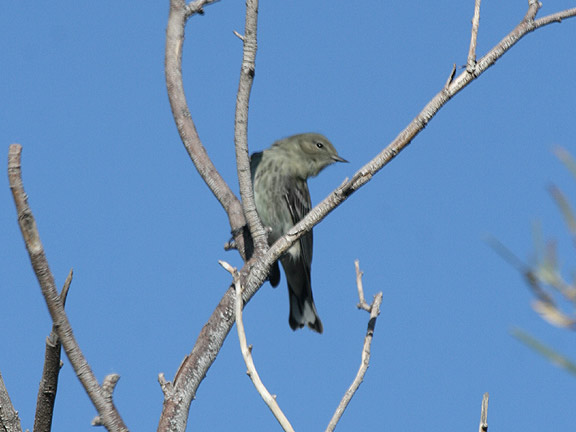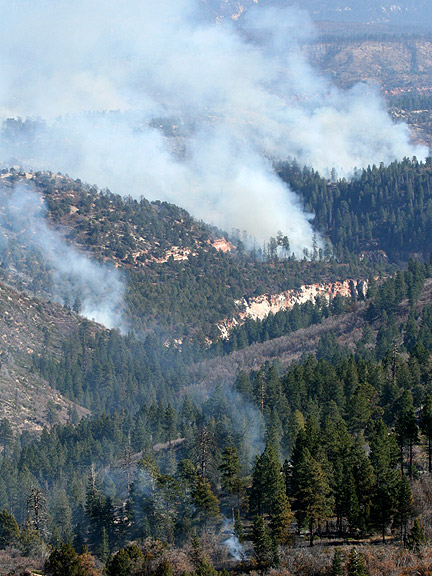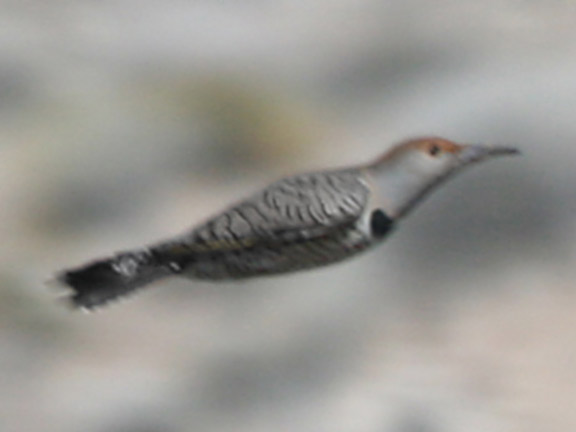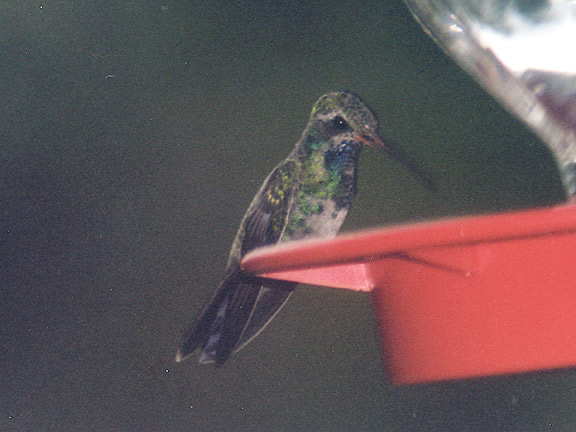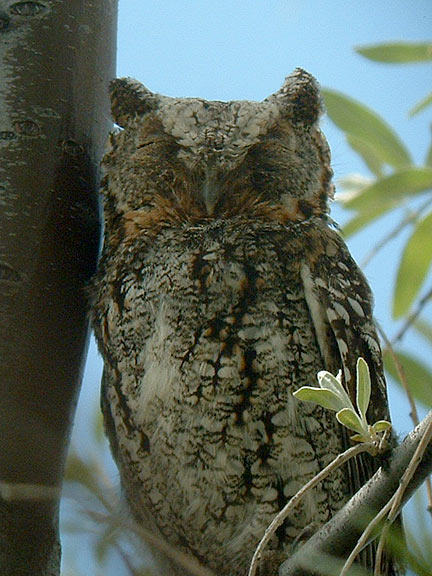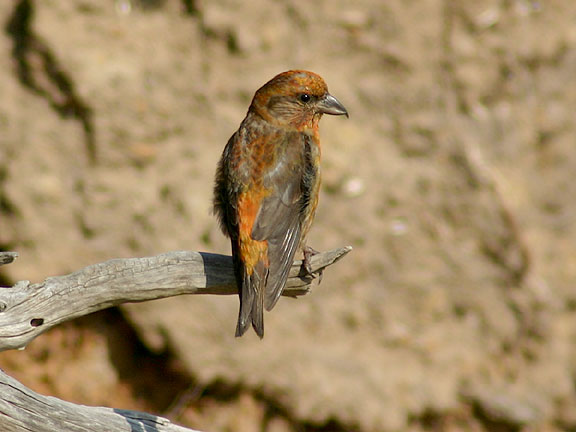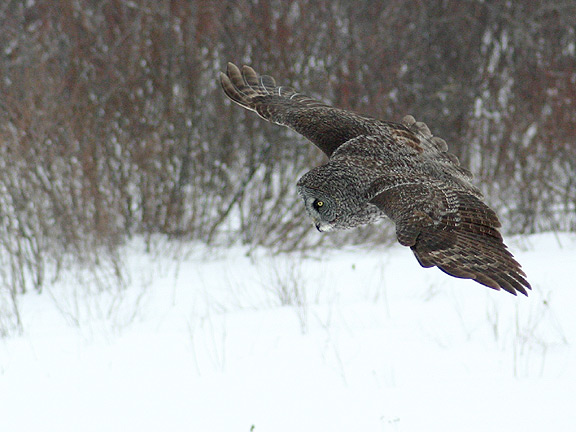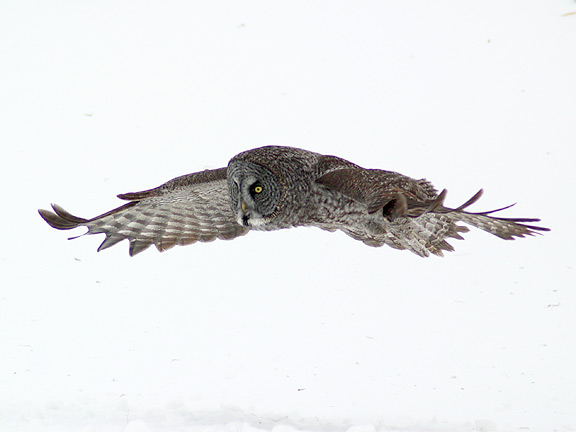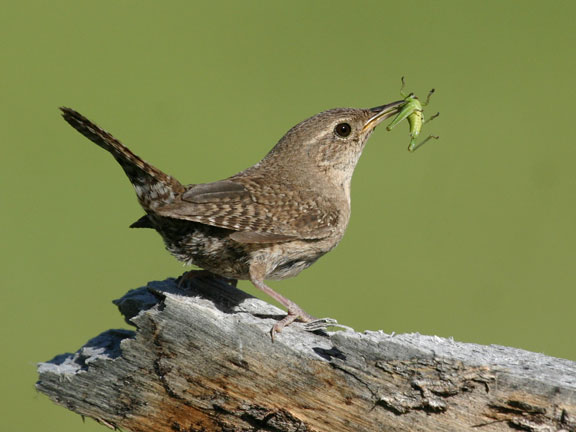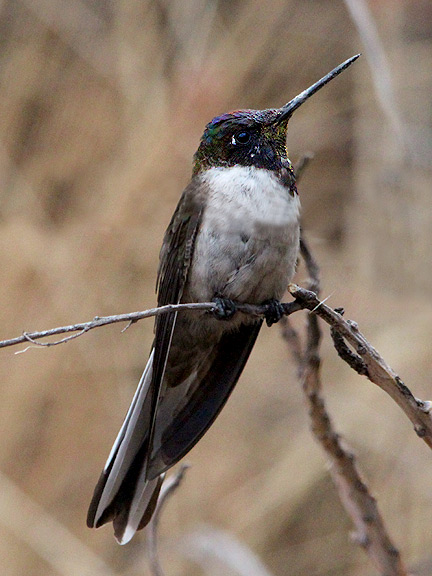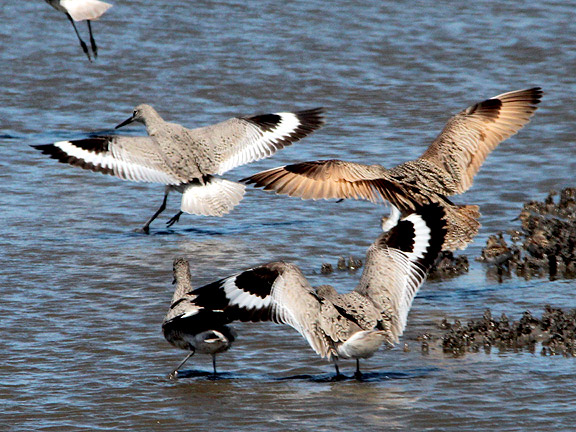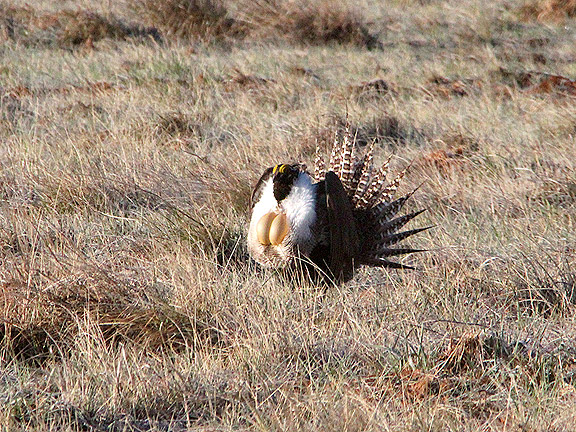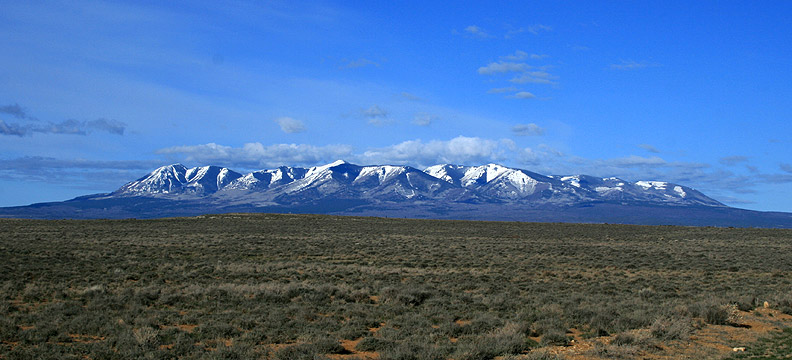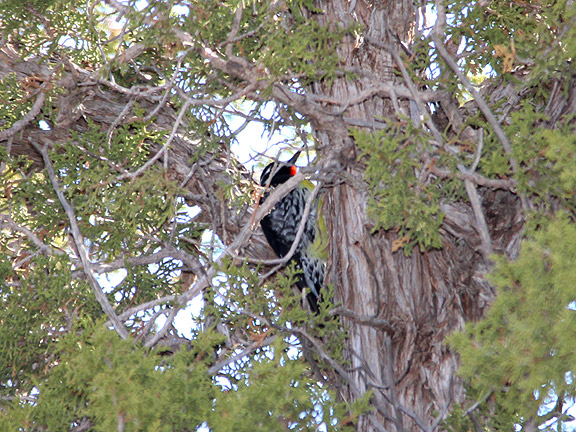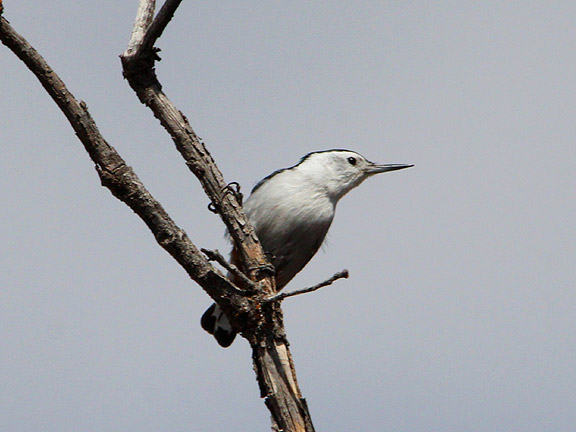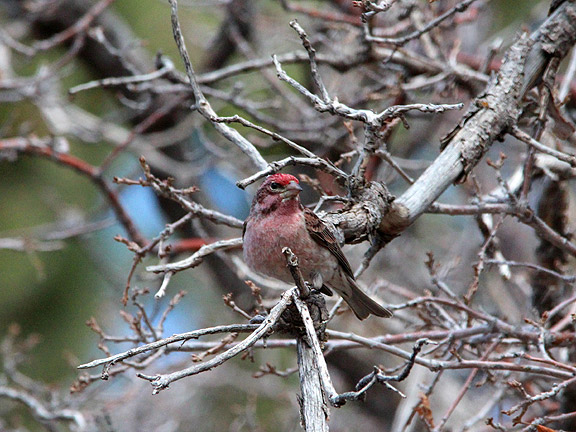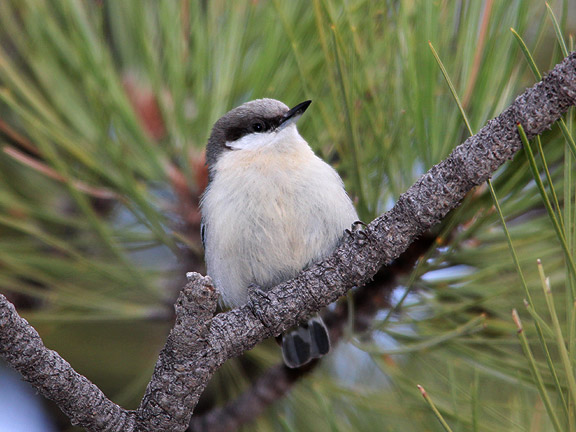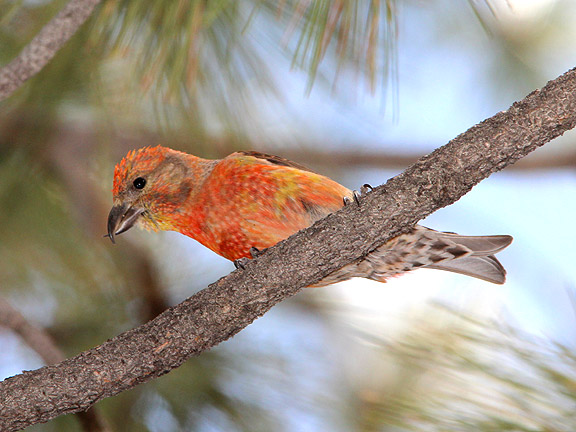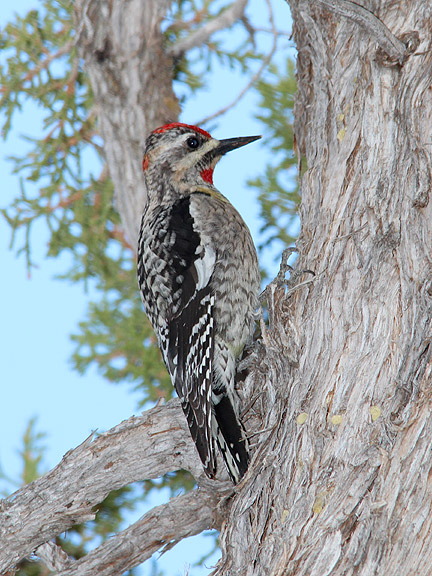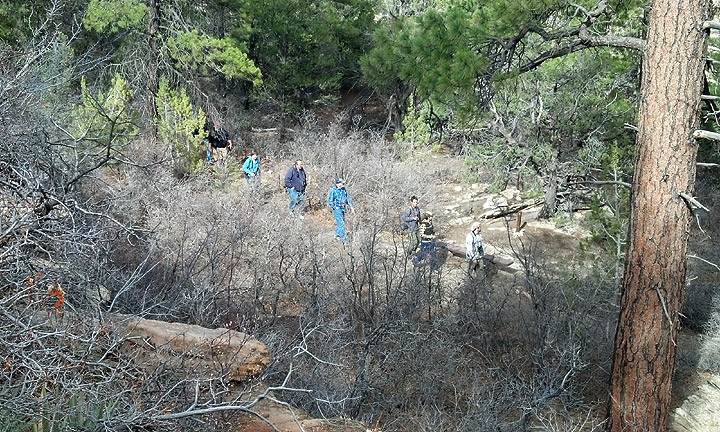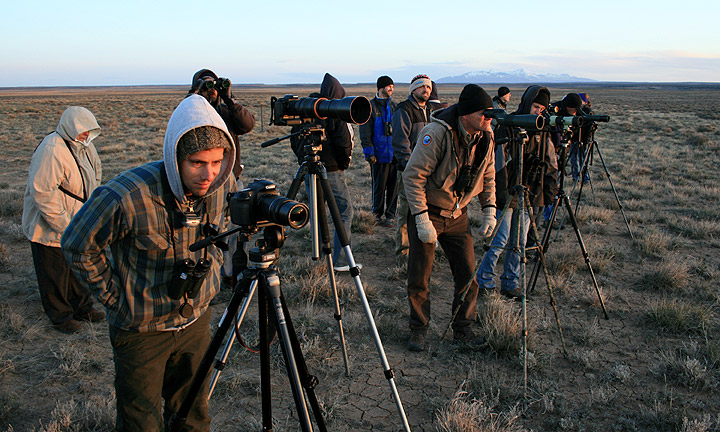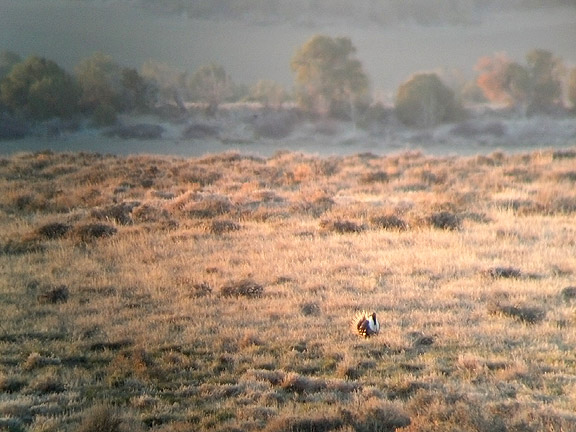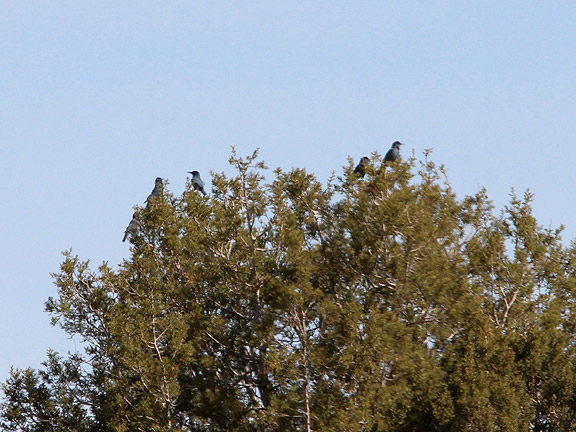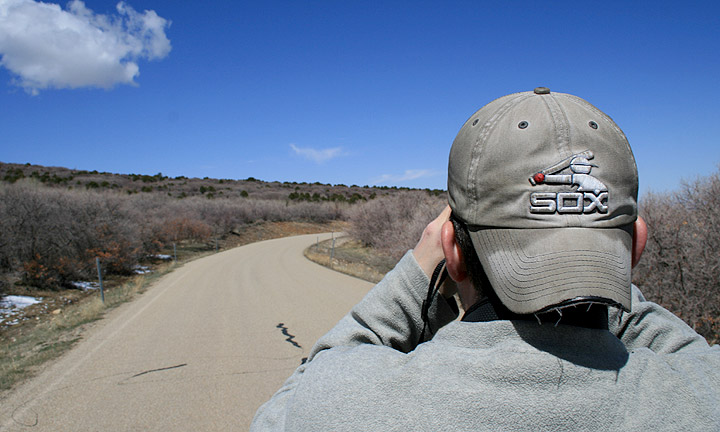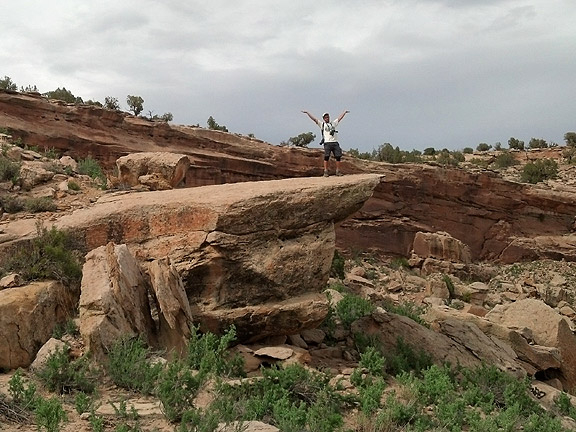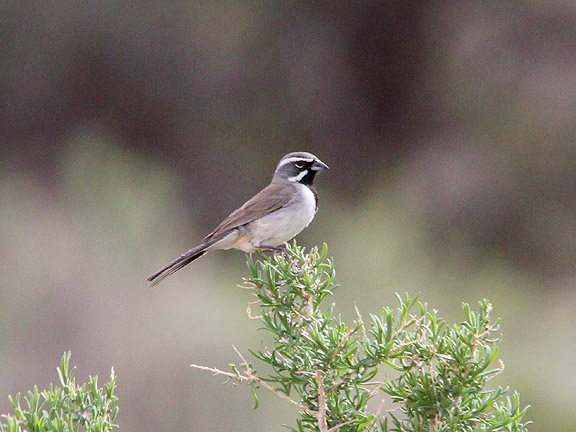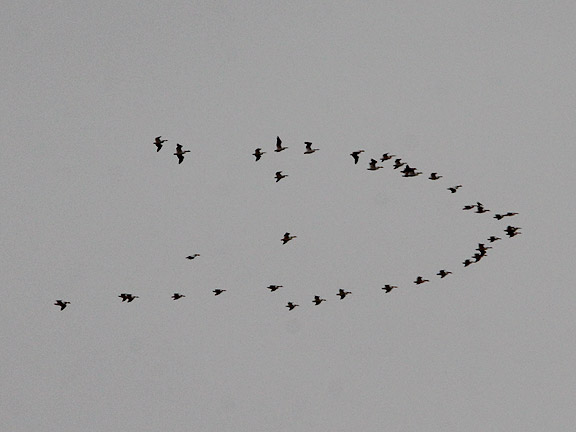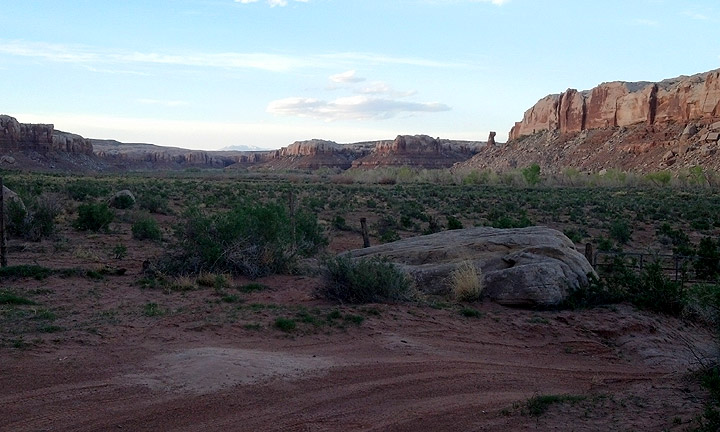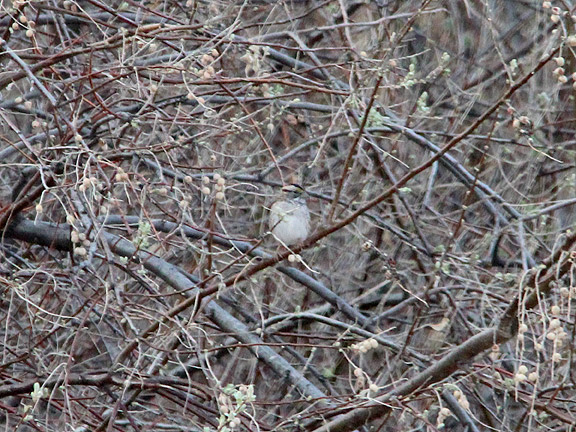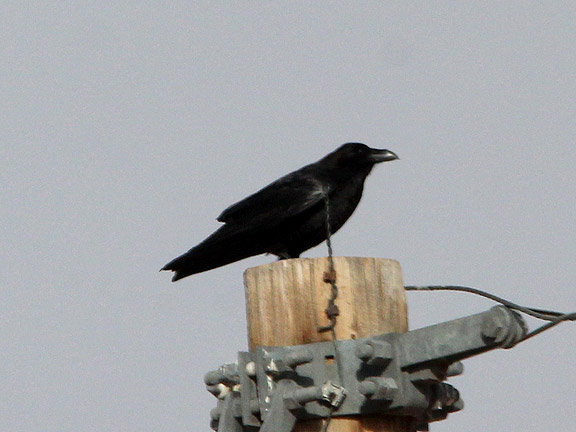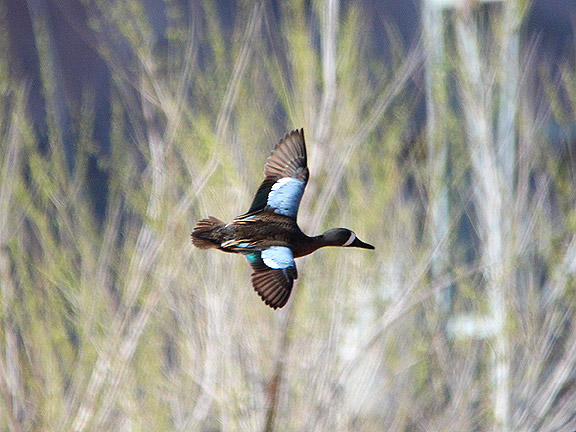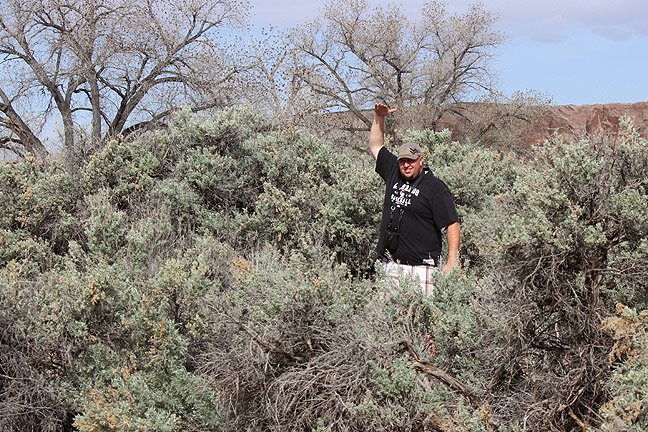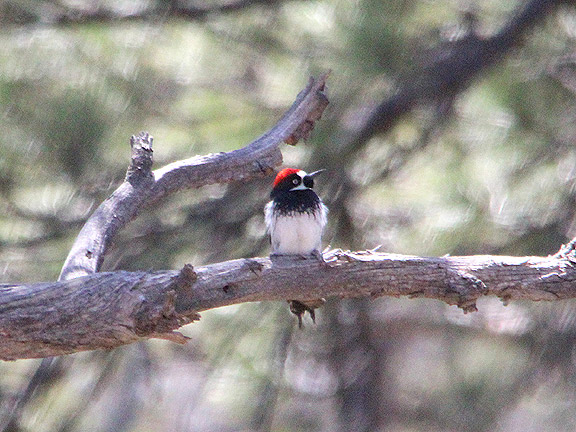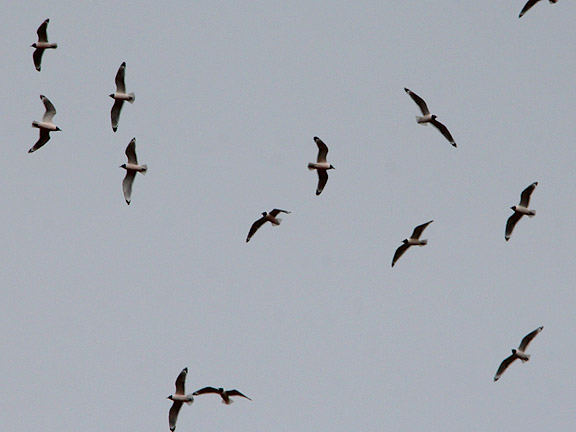This past weekend, April 12th and 13th, we completed the first ever Utah Birders Gunnison Sage Grouse Days event in Monticello, Utah. We were able to set up a 15 person visit to a lek on private land near Monticello, as well go birding in the general vicinity. The following recap covers the event, as well as pre-even scouting, and post event birding.
Jeff Bilsky, Kenny Frisch, and I got an early start to the weekend, leaving Salt Lake in the midst of rush hour on Thursday the 11th. We planned to spend the first half of Friday scouting for Saturday, as well as birding our way down to Monticello. We had to make a stop in Provo to pick up stickers for the event, so along with our late start we fit in limited birding on the way down.
Stickers and T-Shirts for the Event
We did make a stop in East Bay near the water treatment plant and as luck would have it one of the resident
OSPREY decided to put on a show for us as it gathered nesting material. For several minutes we watched as the bird flew past, dove on a a hillside with talons open and legs stretched, and grabbed nesting material. The bird would circle back and do it several times before finally flying off in the direction of the nest platform. The lucky spot we ended up in gave us an unforgettable photo opportunity.
Osprey gathering nesting material in Provo.
Talk about an awesome kick off to the weekend--we had no idea how much better it would continue to get... We made a brief stop at the pond near the Flying J opposite Camelot Woods between Provo and Springville. A few ducks and geese, as well as American Avocets, Black-necked Stilts, and Killdeer were present. A small flock of
TREE SWALLOWS with two
BARN SWALLOWS were flying overhead as well. Back on the road we headed up Spanish Fork Canyon and down Price Canyon, noting a few odds and ends along the way including both
LOGGERHEAD SHRIKE and a flock of
AMERICAN AVOCET on the Price Canyon side.
Sunset on the hills over Price.
After grabbing dinner in Price it was a dark drive south through Green River, Moab, and finally into Monticello around 11:00pm. We made our way to Devils Canyon Campground, where we opted to camp in the woods up the road above the campground away from the weekend warriors. Just after getting there we were joined by Melissa May who birded the remainder of the weekend with us. Outside the temperature hovered around 31 degrees, and the shorts and flip flops I had been wearing all day were no longer the right attire. After getting my mat set up and sleeping bags on the ground, I tucked in for the night. Did I mention we opted for no tents?
My bed for the first two nights in the mountains.
After a cold night in the mountains we awoke to Kenny's alarm at 6:00am. We decided to drive the Hickman Flats Road to look for any Grouse coming or going to leks, as well as scope out some local specialties. After a quick stop for coffee we were on our way to the flats and after a little looking we found a male
GUNNISON SAGE-GROUSE displaying within 100's of the road. I was shocked at how easy this was. My previous jaunts here had only seen fleeting glimpses of birds running across the road or flying by. This time we watched the bird display for 20 minutes in the glow of the morning sun.
Male Gunnison Sage-Grouse Displaying near Monticello.
While we watched this bird we saw others in the distance, all in all we counted 9 birds, about 11% of the total population in the wild in Utah. A grim reminder that these birds are on the brink of extinction in our state.
The picturesque setting for Gunnison Sage-Grouse Days
After the grouse experience we wandered various roads, getting terrible looks at
SAGE SPARROW, and great looks a
BURROWING OWL right off the road.
GOLDEN EAGLES were seen at several stops, as were
PRAIRIE FALCON, Red-tailed Hawks, and American Kestrel. A lingering
ROUGH-LEGGED HAWK was also seen.
Burrowing Owl along Hickman Flats Road
After going as far east as we could on Hickman Flats, we took Ucolo Road south to North Old Highway to head back to Monticello. Shortly after starting down the road a
LEWIS'S WOODPECKER coursed across the road, followed by another--and then around a half dozen all in all while we watched. This small group of woodpeckers was very active and seemed to be doing pretty good. While we were watching these we came across a sapsucker in the junipers nearby. It took a while to get a good look, but when we did, it was a
WILLIAMSON'S SAPSUCKER! In just 15 minutes we snagged two species that we didn't expect for the weekend.
Williamson's Sapsucker on Hickman Flats was a surprise.
After the woodpeckers we stopped in town before heading towards the Abajos. Loyd's Lake (as the signs at the lake state--however on the internet it is Lloyd's Lake), had a few ducks and grebes, as well as our target
JUNIPER TITMOUSE, and
WHITE-BREASTED NUTHATCH.
White-breasted Nuthatch posing at Loyd's Lake.
We drove up to Dalton Springs Campground where there was plenty of bird activity, including
RED-NAPED SAPSUCKER, the usual chickadees, kinglets, and siskin--and both
SHARP-SHINNED and COOPER'S HAWK.
Sharp-shinned Hawk soaring over Dalton Springs in the Abajos.
From here we made our way around the north end of the mountains picking up
STELLER'S JAY and
CLARK'S NUTCRACKER. A flock of nearly
50 WILD TURKEY crossed the road at one point--we spent about 10 minutes allowing them to cross before we continued. We ended up missing out on any grosbeaks, or rosy-finches that we hoped to come across, but did get into a nice flock of
CASSIN'S FINCHES on the way back to Monticello.
Male Cassin's Finch at Dalton Springs.
Rushing to scout one last location before the rest of the trip participants arrived we hurried to Devils Canyon Campground to try and turn up some of the specialties there. While we ate lunch in the campground we were joined by
RED CROSBILLS, and the #2 target bird here,
PYGMY NUTHATCH.
Pygmy Nuthatch holding still long enough for a photo.
Above our heads
TURKEY VULTURES and
WHITE-THROATED SWIFTS soared. Chickadees, towhees, juncos, and Cassin's Finches could all be heard singing or calling from various trees. We split up to look around for our #1 target, the Acorn Woodpecker, but missed out. I happened to take a break on some rocks where numerous
RED CROSSBILL were overhead, and after starting to hoot like a Pygmy-Owl, one of the male crossbills dropped in closer to take a look--and provide an excellent photo op.
Stunning Red Crossbill checking out my Pygmy-Owl imitation.
As we were meeting back up to leave Kenny walked up from behind and flushed a woodpecker from a tree behind me. We found it a moment later in a large Ponderosa. It was a sapsucker, with a orange-red nape, but a messy barred back. What a conundrum. The bird eventually flew right in to a small tree right next to us, and allowed some great views form close up.
In my opinion the birds was either a hybrid Red-naped X Yellow-bellied Sapsucker, or a 1st winter male YELLOW-BELLIED SAPSUCKER, still attaining adult plumage--with an uncharacteristic amount of red on the nape. I'm betting it's a hybrid, but one can always hope for the cooler pure rarity.
Presumed Yellow-bellied X Red-naped Sapsucker hybrid found at Devils Canyon Campground while scouting for Grouse Days. Although this bird shows heavy traits for YBSA, the mix of field marks probably points to a hybrid.
We had to take off to get back and meet the rest of the group who would be arriving at 3pm to do some afternoon birding with us. Based on the activity at Devils Canyon we decided to take everyone back there. About an hour later we were back with the group, totaling 12 of us for this portion of the trip. The birds had all but stopped making a raucous by the time we got back, and were unable to relocate the sapsucker. Wed did however find
2 EVENING GROSBEAKS and all the other previously mentioned species. As we were getting ready to head out and try for
ACORN WOODPECKER, one bird called twice from just below the parking area at the end of the campground loop. We still tried for the birds in their usual spot along 191, but nothing was seen or heard there. As a side note this was our guiding groups 8th Woodpecker of the day--okay 7.5th species. An 7.5/8 woodpecker day in Utah is fairly unusual, and worth mentioning--maybe a blog post about it another time would be interesting too.
Utah Birders at Devils Canyon Campground.
After missing visuals of the woodpecker we herded the group back to Monticello where we ate dinner at Wagon Wheel Pizza in town. There aren't a lot of options for places to eat in Monticello, and this was by far the best choice. Although the service was slow (I guess they weren't used to 14 patrons on a Friday night), the Pizza was good. By the end of the meal all 15 participants in the trip had arrived, and we headed across the street to the San Juan Administration building where we met Guy Wallace a biologist for the Department of Natural Resources, who has spent his 31 year career in Monticello. Guy knows the Sage-grouse in Utah better than anyone, and gave a brief orientation on the birds, their history, status, and possible future. Guy would also be our guide to the lek the following morning. Following the orientation everyone parted ways for the night--and for those interested in owling we would take a short walk around Devil's Canyon later that night.
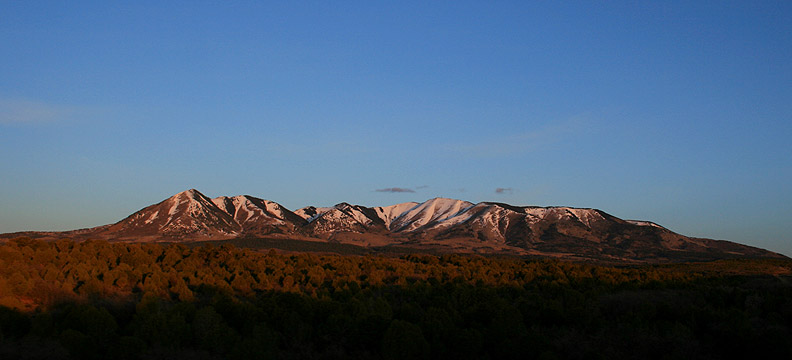
The Abajo Mountains were a great backdrop for the weekend.
At 9:30pm our group of 4 met up with 4 other Utah Birders and were able to call in one
NORTHERN SAW-WHET OWL on the moonless evening. In the past the owls here have been more vocal and cooperative, but the calling bird was more than enough to satisfy most of the group. Then it was time for another cold night camping--we did manage to have a fire for about an hour before finally ditching the warmth of the flames for the warmth of the sleeping bags. We had to get up at 5am the next morning, so we needed some sleep to make that happen.
Sunrise over the Hickman Flats near Monticello.
When Kenny's alarm went off Saturday morning at 5am I wanted to throw a rock at him--what were we doing? Oh that's right, getting a life bird for the vast majority of the group--Kenny, Jeff, and Melissa had that pleasure they day before, but the other 12 attendees had either never seen one or had only poor looks in the past. After hastily packing up camp we headed into Monticello again. A quick stop for coffee and restrooms and we were on our way to meet the group. We piled into 4 vehicles and fell in behind Guy Wallace to head out to Hickman Flats to visit the lek. We arrived on site to find several males booming 250-300 yards out in a field. The 15 members of the group gazed the birds in awe.
Utah Birders watching Gunnison Sage-Grouse
We spent over an hour there in the 30 degree air, with a slight northeast breeze, easily dropping the way it felt into the low 20's. It was miserably cold, but everyone was exuberant about getting to watch the birds. We were able to watch several skirmishes between the males--all vying for the attention of just 1 female present this morning. Other birds at the lek were limited to a few
VESPER SPARROW, COMMON RAVEN, and
HORNED LARK. But the show-stopping
GUNNISON SAGE-GROUSE were the whole point of the weekend, and we could officially call Grouse Days a success!
Displaying Gunnison Sage-Grouse in the distance.
15 Excited and Cold Utah Birders on the Hickman Flats.
After thanking Guy for his help and the great viewing opportunity we set off across the flats to show off some of the other birds. We relocated the
BURROWING OWL from the previous day, albeit several hundred yards further from the road. We ended up tracking down a
SAGE SPARROW--the bird was really flighty and every time the group got anywhere near it flew off into the sage. I split up from the cars and hiked ahead to see if I could get it out int he sage in my scope, for everyone to see. As soon as I was out of earshot of the cars, I could hear the beautiful song of these unique little sparrows. I quickly found the bird, and as the cars caught up waved them in to get a look. Eventually with a little coaxing the male individual came right in to the fence providing stellar looks for all.
Singing Sage Sparrow along Hickman Flats Road.
We stopped to pick up the Lewis's Woodpeckers, and also snagged
JUNIPER TITMOUSE, CHIPPING SPARROW, and an early arriving
DUSKY FLYCATCHER along North Old Highway. After that everyone headed into town to regroup for our next set of stops. On the way in we fell behind and as luck would have it a flock of
PINYON JAYS flew across the road for a new trip bird.
Pinyon Jays atop a distant Juniper.
We made stops at Loyd's Lake and Dalton Springs in the Abajos again and saw much of the same from the previous day before having everyone meet at Devil's Campground one last time to get their official grouse days shirt and sticker, and the last few stops of the day--Recapture Reservoir and the Blanding Wastewater Treatment Ponds.
Jeff looking for birds in the Abajos.
We were down to 10 people at Recapture, but those lucky that stayed got killer looks at an
OSPREY in a dead snag north of the reservoir, and
4 COMMON LOONS near the damn. From here we headed to Blanding losing 4 more participants as we got further south. At the ponds we picked up
FRANKLIN'S, BONAPARTE'S, and a single
CALIFORNIA GULL. A first county report (in eBird) for
MARBLED GODWIT included 3 individuals--and a flock of 40 or so
WHITE-FACED IBIS were hunkered down out of the wind. We met British birder Dave Briddon and his wife here--they alerted us to the Franklin's Gulls, Godwits, and Ibis. In turn we showed them the Bonaparte's and California Gull. It was other-worldly running into birders in Blanding--a desolate stop in the middle of the desert where I have never ran into birders in the past. In any event, this is where Grouse Days came to an end. We parted way with Norm and Gail Jenson who stuck it out to the last stop, and our group of 4 dropped into the desert and Montezuma Creek Canyon.
Kenny on "mini Pride Rock" in Montezuma Creek Canyon
We checked several places I have had luck in the past--but the creek was completely dry, and the ponds I know about were all but empty--it was a sad affair. We missed Black Phoebe at a pond that I have had them at every time I have visited. But did turn up
BLACK-THROATED SPARROW and
CANYON WREN in another location where they are expected. A surprise here was while checking a Great Horned Owl nest from past years, we flushed a
BARN OWL that was either appropriating the nest, or the cliffs nearby. This was a 1st in eBird for the county. As we headed south out of Montezuma Creek was had a
WILD TURKEY cross the road, followed by a flyby hummingbird that we assumed was a
BLACK-CHINNED. At the pond where we missed the phoebe earlier, Jeff spotted
2 BLACK PHOEBES that had just been hiding on our earlier stop.
Although usually associated with southwest Utah, the Black-throated Sparrow in habits the entire southern half of Utah, and is quite common in the low desert of San Juan County.
We swung through Hatch Trading Post, and continued towards the town of Montezuma Creek--as we approached Jeff spotted a flock of 38 or 39
AMERICAN WHITE PELICANS soaring several hundred yards above the desert. They appeared to be following the San Juan River towards Lake Powell, but surely looked out of place in this barren wasteland.
Out of place migrant American White Pelicans over the desert.
We made it to Bluff and after a little struggle finding a place to stay for the night, we ended up at one of my old campsites for the night. We spent the waning hours of daylight watching
WHITE-THROATED SWIFTS head into the cliffs for the night, while we ate dinner and just relaxed. I was out cold by 9:30, and basically slept through the night. It was easy since the temperature only got down to 50--too bad we hadn't camped here the previous two nights...
Sun setting on the red rocks in Bluff.
We started the morning in Bluff with a quick gas station break, next to the Kokopeli Inn, where a
LUCY'S WARBLER was singing form the trees. From here we headed west to Sand Island Campground, but instead of birding the campground we headed to the bridge on the highway going over the river--just west of the campground. Here you can pull off the road next to the river. While walking and scanning along the banks here we heard what sounded like a
WHITE-THROATED SPARROW singing on the opposite side of the river. We got bad looks and decided to try and coax it out just to be sure. It was indeed what we had hoped, and a great find for the trip.
Vagrant White-throated Sparrow along the San Juan River.
Heading back into Bluff we were almost to town when I spotted what looked like a crow on top of a power pole on the highway. I hollered at Jeff to stop but couldn't spit out that I thought it was a
CHIHUAHUAN RAVEN while I hurried to get out and take pictures. The bird ended up flying rather quickly, but not before I took 2 or 3 shots of it perched. I told the guys what I thought it was but wasn't completely sure till I got home and checked the pictures on a big screen. You can judge for yourself here...
Possible Chihuahuan Raven just outside of Bluff.
Back in town we followed
5 WHITE-FACED IBIS flying right over the highway. We added
YELLOW WARBLER on the east side of town before heading to the Navajo Twins rocks and ponds on the north side of town in Cottonwood Wash. The upper pond was almost completely empty and the only bird of note was a
LUCY'S WARBLER in the trees. the lower pond appeared void of all birds except for an
AMERICAN COOT, but as we walked down the dike that leads into the pond Jeff spotted all 3 species of teal including a gorgeous male
BLUE-WINGED TEAL.
Male Blue-winged Teal showing its namesake.
After enjoying great looks at the ducks, and unsuccessfully trying to conjure up Sora, Virginia Rail, and Common Moorhen, we were walking away when a
WHITE-WINGED DOVE started cooing from the trees below the pond. After getting eyes on the bird it mad ea short flyby, allowing for a few pictures. It is likely that this species breeds in Bluff, as there have been birds here on each of my visits here in the past decade. For anyone that happens to be down this way, keep an eye out for this bird typically associated to the other southern corner of the state.
White-winged Dove we found in Bluff.
We headed out of town and headed east along the San Juan River to see what else we could find. There wasn't much but we did turn up a few more
LUCY'S WARBLER--and I was impressed with the 7' tall sage brush along the San Juan River here.
The tallest Sage Brush I've ever seen...
We decided it was time to head back north so made our way back to Blanding with a quick stop at the Wastewater Ponds. The birds had mixed up a little form the previous day--with 2 fewer godwits, and 34 more
BONAPARTE'S GULLS. A huge flock of about
100 YELLOW-HEADED BLACKBIRDS were also present. We stopped again at Recapture Reservoir, where a
GREATER YELLOWLEGS upped our shorebird count for the trip, and a small flock of
RING-BILLED and FRANKLIN'S GULLS sat on the water. Our last birding stop of the trip came as we made a last ditch effort for a visual on
ACORN WOODPECKER. This time with fewer people, and less traffic, one bird obliged us and sat patiently watching us from about 100' feet away in a Ponderosa for 20 minutes. For Jeff it was the moment of finally setting his eyes on that nemesis bird that had eluded him time and time again
Acorn Woodpecker was a great way to end our birding in San Juan County.
We parted ways with Melissa here and started the 5+ hour journey back north. We made one last stop in Green River--not for birds but to fill up on a Bacon Cheeseburger at Ray's Tavern--it's truly the only place to eat in Green River--no serious, unless you want fast food this is the only place to go.
Lunch stop in Green River at Ray's Tavern.
We weren't quite done birding though--in Spanish Fork Canyon Jeff spotted a flock of about 50
FRANKLIN'S GULLS flying over the highway, which we had to stop and look at given where we were.
A few of the 50+ Franklin's Gulls in Spanish Fork Canyon.
And as we rolled into Spanish Fork a
SWAINSON'S HAWK made its way onto our trip list,
which ended up at 130 species for the 72 hours we were out. It was hard not to look back at the weekend and call it a great success--and one of the best weekends of birding I've had in Utah. Hopefully in 2014, we will be able to have the 2nd annual Gunnison Sage-Grouse Days, and introduce a few others to birding in this remote and often forgotten portion of Utah.
Labels: fieldtrip, life birds, san juan county, trip reports, upland game birds







